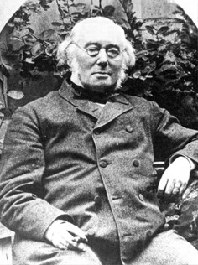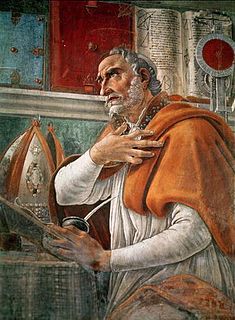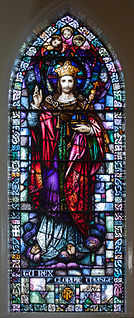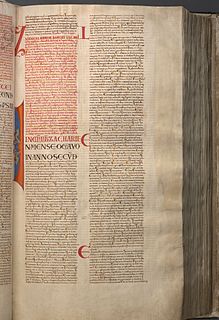This article provides insufficient context for those unfamiliar with the subject.(August 2010) (Learn how and when to remove this template message) |

The Kingly office of Christ is one of the Threefold Offices, or special relations, in which Christ stands to his people, viz. those of a prophet, priest, and king. [2]
Contents
In the Gospel of Luke, the angel Gabriel proclaims, "Behold, you will conceive in your womb and bear a son, and you shall name him Jesus. He will be great and will be called Son of the Most High,* and the Lord God will give him the throne of David his father, and he will rule over the house of Jacob forever, and of his kingdom there will be no end.” [3] In the Book of Revelation it is declared that the Lamb is "King of kings, and Lord of lords." [3]
Jesus Christ God is named as the unique mediator between the Lord and men ( 1Timothy 2:1-8 ), as the MediatorNew Covenant, whose seal was the Most Precious Blood of the Lamb of God ( Hebrew 9:15-28 ), poured out for many for the forgiveness of sins ( Luke 22:19-20 ). Saint Peter the Apostle affirms that any person can uniquely be saved in the name of Jesus Christ God ( Acts 4:11-12 ). In the same way, the Lord qualifies Himself as Way, Truth, and Life ( John 14:6 ), and the unique possible door of salvation ( John 10:1-7 ) for any single sheep created through the mediation of the Good Shepherd (John 1:3).
Christ is King and sovereign Head over his Church and over all things to his Church (Ephesians 1:22; 4:15; Colossians 1:18; 2:19). His rule extends to every creature, for " all authority is committed into his hands, both in heaven and on earth". [2] Its establishment among men is progressive, but it is destined at last to fill the whole earth. [2] This royalty differs from that which essentially belongs to him as God the Son, for it is given to him by God the Father as the reward of his obedience and sufferings (Philippians 2:6-11), and has as its especial object the upbuilding and the glory of his redeemed Church.

"Christian Church" is an ecclesiological term generally used by Protestants to refer to the whole group of people belonging to Christianity throughout the history of Christianity. In this understanding, "Christian Church" does not refer to a particular Christian denomination but to the "body" of all "believers", both defined in various ways. Other Christian traditions, however, believe that the term "Christian Church" or "Church" applies only to a specific concrete historic Christian institution, e.g. the Catholic Church, the Eastern Orthodox Church, the Oriental Orthodox Churches, or the Assyrian Church of the East).

God the Son is the second person of the Trinity in Christian theology. The doctrine of the Trinity identifies Jesus as the incarnation of God, united in essence (consubstantial) but distinct in person with regard to God the Father and God the Holy Spirit.
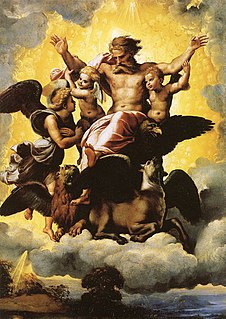
God the Father is a title given to God in various religions, most prominently in Christianity. In mainstream trinitarian Christianity, God the Father is regarded as the first person of the Trinity, followed by the second person God the Son and the third person God the Holy Spirit. Since the second century, Christian creeds included affirmation of belief in "God the Father (Almighty)", primarily as his capacity as "Father and creator of the universe". However, in Christianity the concept of God as the father of Jesus Christ goes metaphysically further than the concept of God as the Creator and father of all people, as indicated in the Apostle's Creed where the expression of belief in the "Father almighty, creator of heaven and earth" is immediately, but separately followed by in "Jesus Christ, his only Son, our Lord", thus expressing both senses of fatherhood.
Christ's mediatorial kingdom may be regarded as comprehending,
- his kingdom of power, or his providential government of the universe;
- his kingdom of grace, which is wholly spiritual in its subjects and administration; and
- his kingdom of glory, which is the consummation of all his providential and gracious administration.
Christ sustained and exercised the function of mediatorial King as well as of Prophet and Priest, from the time of the fall of man, when he entered on his mediatorial work; yet it may be said that he was publicly and formally enthroned when he ascended up on high and sat down at the Father's right hand (Psalms 2:6; Jeremiah 23:5; Isaiah 9:6), after his work of humiliation and suffering on earth was "finished" and until his Second Coming.

The fall of man, or the fall, is a term used in Christianity to describe the transition of the first man and woman from a state of innocent obedience to God to a state of guilty disobedience. Although not named in the Bible, the doctrine of the fall comes from a biblical interpretation of Genesis chapter 3. At first, Adam and Eve lived with God in the Garden of Eden, but the serpent tempted them into eating the fruit from the tree of knowledge of good and evil, which God had forbidden. After doing so, they became ashamed of their nakedness and God expelled them from the Garden to prevent them from eating from the tree of life and becoming immortal.

The Christian doctrine of the Session of Christ or heavenly session says that Jesus Christ is seated at the right hand of God the Father in Heaven—the word "session" is an archaic noun meaning "sitting." Although the word formerly meant "the act of sitting down," its meaning is somewhat broader in current English usage, and is used to refer to a sitting for various reasons, such as a teaching session, or a court or council being in session. The New Testament also depicts Jesus as standing and walking in Heaven, but the Session of Christ has special theological significance because of its connection to the role of Christ as King. The Session of Christ is one of the doctrines specifically mentioned in the Apostles' Creed, where "sitteth on the right hand of God the Father Almighty" immediately follows the statement of the Ascension.
The Second Coming is a Christian and Islamic belief regarding the future return of Jesus after his ascension to heaven about two thousand years ago. The idea is based on messianic prophecies and is part of most Christian eschatologies.




